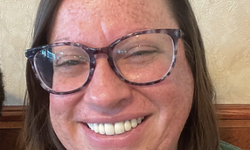Opinion | Parents want options for school reopening plans amid COVID
All across our state, in districts large and small, people are beginning to share their experiences with distance learning and their hopes for this fall. While their conversations often vary widely, there are a few common factors all of them share — and schools and communities need to know what they are.
Here’s the backstory: Since June, Launch Michigan and its partners have been conducting in-depth research into the COVID-19 experience, with the hope that our state can develop more robust, equitable infrastructure and funding over the long term. A series of surveys remains in the field and focus group work is nearing completion, as is an in-depth analysis of districts’ continuity of learning plans from the spring. This work has been diverse; engaging educators, parents and community members in suburban, rural and urban communities.

While our conclusions have yet to be reached, there are two early pieces of information we can’t wait to share. Districts currently finalizing their Return to Learn plans for the fall need to know what we’ve been hearing — and they need to know it now.
People want options, educators need support
During our conversations, the topic of a fall reopen has engendered spirited conversation. People have a wide range of comfort levels when it comes to how children will go back to school, and disagreement is common. It seems that, regardless of the view individuals hold, they hold it with a high degree of conviction. They are not inclined to budge
But there is one point of consensus at which all our talks seem to arrive: people want to have options. One parent’s discomfort meets another family’s wish to move forward with a sense of firm but friendly disagreement. Hybrid learning is viewed with too many questions to count, so often the groups will simply ask for the ability to pursue the option that makes most sense to them.
The challenge is providing quality options. Can districts and educators provide equally rigorous in-person and online choices to parents and students simultaneously? Are there enough educators and funding to meet the demands? As parents are looking at their own children’s needs and well-being, schools may need to craft new, flexible options – and they need the support to do that effectively.
Synchronous learning is highly preferred
According to many parents, their students went home in March when schools closed due to the pandemic to learning packets and online videos. These types of learning opportunities are called “asynchronous,” because students are working independently.
But these asynchronous experiences did not work out as well as hoped. Parents say their students either completed the work too quickly and were at loose ends all day or, conversely, required extensive levels of parent support. This support was difficult for many parents to provide, as they weren’t familiar with the latest methods of doing the work, or lacked sufficient subject-area skills themselves.
Synchronous learning — whether it uses Zoom, Microsoft Teams, or some other format — offers students an opportunity to engage with one another and their teachers. It gives teachers an opportunity to call on their pupils, ensure comprehension, and offer sound feedback. But it appears to not have been as widely used in the spring — a fact parents hope will change in the fall.
Communities to schools: Talk with us
Our preliminary findings show that district/stakeholder communications are essential to getting off on the right foot, regardless of what local Return to Learn plans look like. Unfortunately, these essential engagements have been a little hit or miss, given many of the external factors districts have been facing.
Parents, educators and community leaders need to know which fall learning options and tools are being considered and what criteria will be used to evaluate them. They also shared their need to have a voice in the process, so they can be invested in everything that comes next, no matter what it is.
During this most extraordinary period in our history, there’s a simple element that can make all the difference for school districts in Michigan: trust. Building it requires an honest, open dialogue — one that seeks to listen as it shares and responds and flexes to accommodate local needs.
Next steps
With mere weeks left until school is slated to begin, Michigan districts are feeling the crunch. They know they have a great many stakeholders to support and decisions to address. They have the unenviable job of helping drive our state into uncharted territory.
We offer our insights to help support their efforts and encourage a high degree of healthy dialogue across our state. It won’t be easy, but it will help offer a strong, united way forward.
See what new members are saying about why they donated to Bridge Michigan:
- “In order for this information to be accurate and unbiased it must be underwritten by its readers, not by special interests.” - Larry S.
- “Not many other media sources report on the topics Bridge does.” - Susan B.
- “Your journalism is outstanding and rare these days.” - Mark S.
If you want to ensure the future of nonpartisan, nonprofit Michigan journalism, please become a member today. You, too, will be asked why you donated and maybe we'll feature your quote next time!




